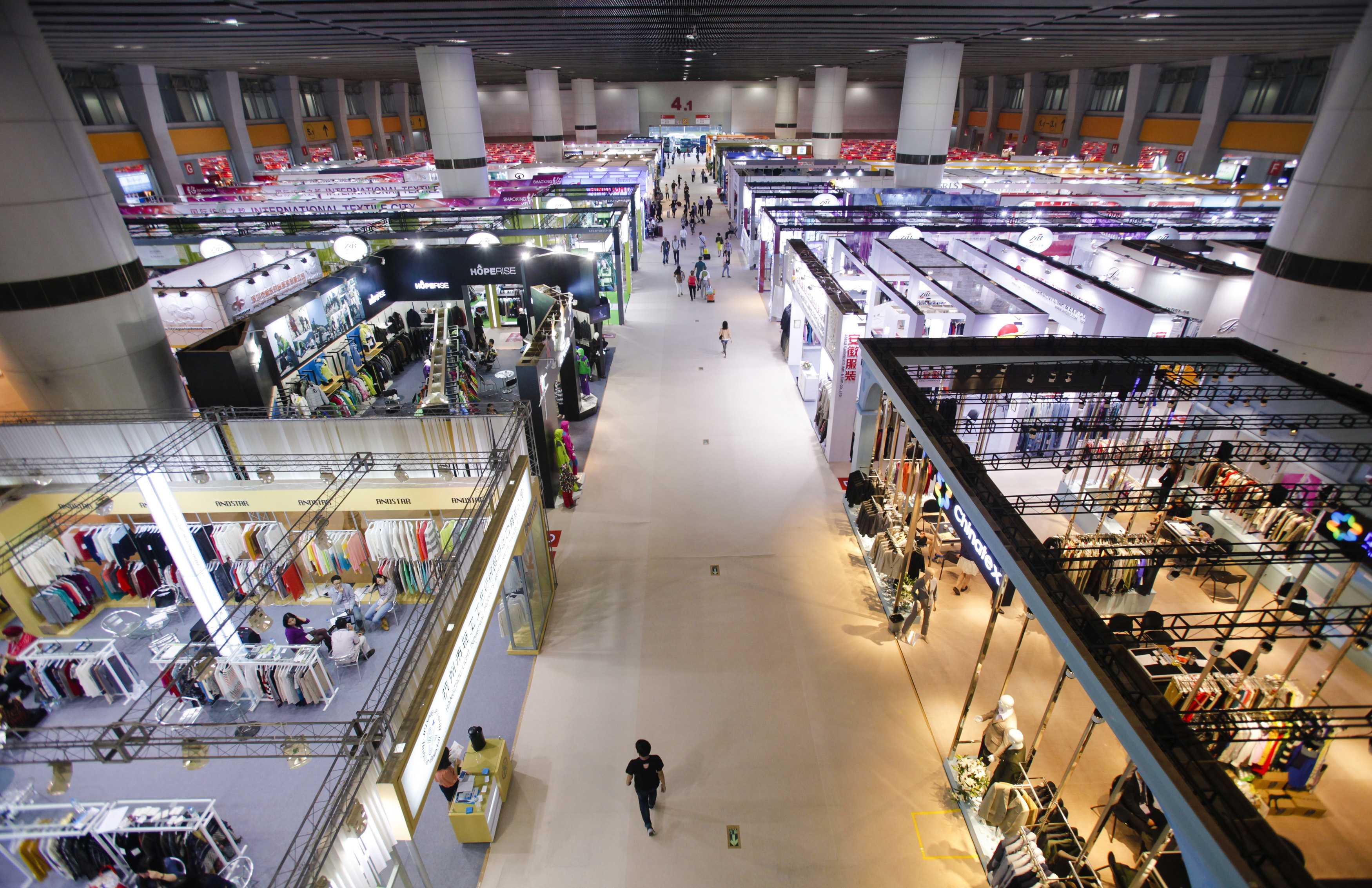China, U.S. factory growth accelerates; euro zone stumbles
Bareksa • 03 Jun 2014

A view shows people visiting different booths at the Guandong Import and Export Fair in Guangzhou, Guangdong province (REUTERS/Alex Lee)
Signs Chinese reforms having positive economic impact
Bareksa.com - U.S. and China manufacturing activity expanded in May, putting the world's two largest economies on a seemingly firmer path to recovery, but a slowdown in euro zone factory growth boosted expectations of policy easing by the European Central Bank.
The Institute for Supply Management said its index of national factory activity rose to 55.4 in May from 54.9 in April, just shy of the 55.5 expected according to a Reuters poll of economists. ISM had initially said the reading came in at 53.2 for May, but that figure was corrected due to an error in applying seasonal adjustments.
A reading over 50 indicates expansion in manufacturing activity.
Financial data firm Markit said in a separate report its final U.S. Manufacturing Purchasing Mangers Index rose to 56.4 in May from 55.4 in April, following a preliminary reading of 56.2.
Data on manufacturing activity in China meanwhile raised hopes that Beijing's targeted measures to bolster growth are having an impact.
Chinese factory activity grew at the fastest pace in five months in May but euro zone manufacturing growth slowed more than initially thought, fuelling expectations the European Central Bank will ease policy this week.
"The Chinese numbers were fractionally higher. We are beginning to make some progress but it is consistent with this story that the Chinese economy is not going to grow as fast as it has in the past," said Peter Dixon at Commerzbank.
"The European numbers were in and around the ballpark. It's not the kind of data the ECB is going to react to instantly but it is part of a bigger puzzle that says we need more growth in Europe."
Markit's final euro zone Manufacturing Purchasing Managers' Index (PMI) slipped to a six-month low of 52.2 in May from April's 53.4 as strong figures from Germany failed to offset contraction in France.
The final number was below the initial reading of 52.5 but held above 50 for the 11th straight month. A subindex measuring output sank to 54.3 from 56.5, weaker than the initial reading of 54.7.
"The slowdown in euro zone manufacturing activity in May reinforces belief that the ECB will deliver a package of measures at its 5 June policy meeting," said Howard Archer at HIS Global Insight.
To spur growth, boost lending and drive up inflation the ECB is widely expected to cut its deposit rate to below zero, reduce its main borrowing rate and launch a refinancing operation aimed at businesses when it meets on Thursday.
Inflation in the 18 nations using the euro is predicted to have held steady at just 0.7 percent in May, well within the ECB's "danger zone" of below 1 percent and also below its preferred 2 percent ceiling.
Germany, Europe's largest economy, again supported the tepid overall growth but in France, the bloc's second-largest economy, the PMI sank back below the 50 mark after just two months of expansion.
In non-euro using Britain, manufacturing activity kept expanding at a rapid pace in May, suggesting the economic recovery there has lost little of its shine this quarter.
The reassuring Chinese factory data lifted world stocks and commodities on Monday, although markets are waiting to see how far the ECB will go with policy easing plans.
The weaker-than-expected initial ISM report weighed on U.S. stocks and helped bond prices, but equities recovered after chatter of a correction started making the rounds.
STRONGER CHINA
China's official PMI, which is geared towards bigger, state-owned firms, rose to 50.8 in May, from April's 50.4, the National Bureau of Statistics said on Sunday, beating market expectations of 50.6.
"Recent pro-growth measures, which were stepped-up further last Friday, may have lent a helping hand here," said Nikolaus Keis at UniCredit.
China's manufacturing data bolstered expectations that the world's second-largest economy is regaining strength as the government's pro-growth measures kick in.
Beijing stepped up policy fine-tuning in recent weeks and has unveiled a slew of measures this year to help shore up the economy, which dipped to an 18-month low in the first quarter and is on track to post the weakest annual showing in 24 years.
China's cabinet announced new easing measures on Friday to help lower funding costs and reduce operating burdens for companies to give more support for the real economy, adding to moves that included hastening construction of railways and public housing.
In South Korea, Asia's fourth-largest economy and one of the leading manufacturing and export powerhouses, the HSBC/Markit manufacturing gauge slid below 50 while trade data showed exports fell.
In India, the manufacturing PMI edged up but came in slightly below the median forecast in a Reuters poll. Indonesia's PMI surged to a record high but hopes were tempered after its trade balance slipped back into deficit in April after two consecutive months of surpluses. (Source : Reuters)